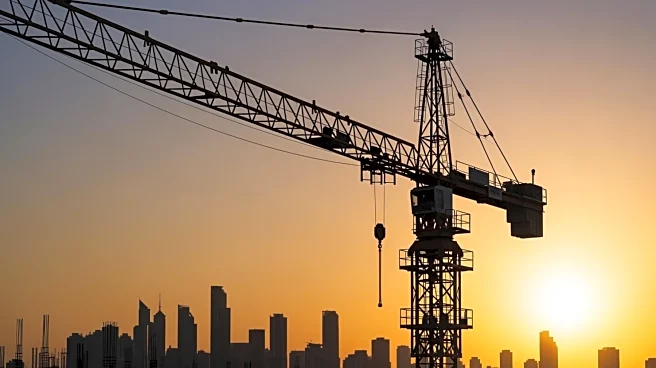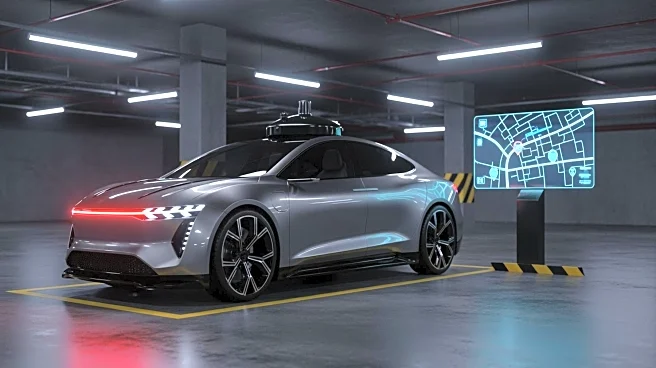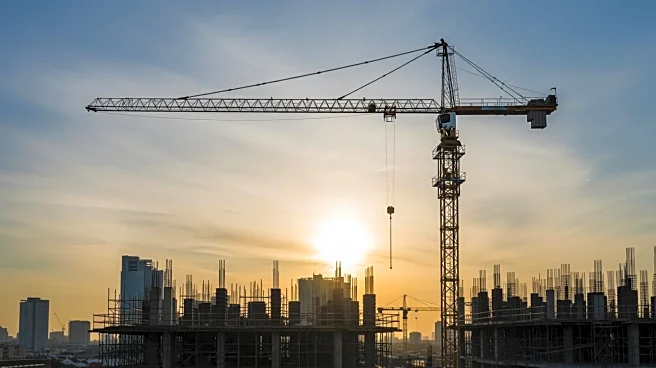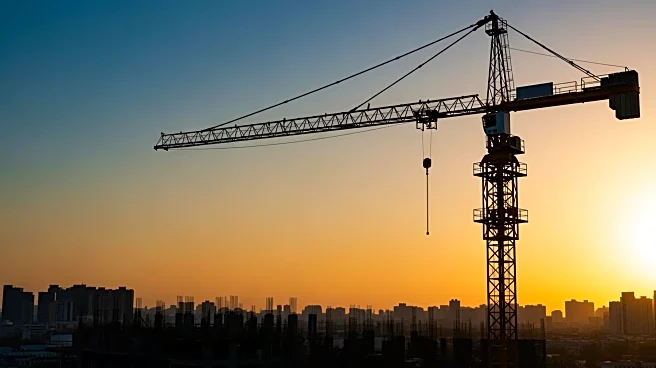What's Happening?
The construction industry is experiencing significant pressure due to rising costs and a slowdown in deal flow, according to Anirban Basu, chief economist at Associated Builders and Contractors. During a recent webinar, Basu highlighted that firms involved
in data center projects report a backlog of about 12 months, but high input and labor costs are affecting contractors across other sectors. The industry is facing tightening financing conditions, which could limit project profitability and delay new groundbreakings into the next year. Data center projects currently dominate private nonresidential construction, but contractors outside this space face reduced backlogs. The momentum in data center construction is expected to persist through at least 2027, although there are concerns about the speculative nature of investments in artificial intelligence infrastructure.
Why It's Important?
The challenges faced by the construction industry have broader implications for the U.S. economy. Rising costs and financing difficulties could lead to delays in infrastructure projects, affecting job creation and economic growth. The slowdown in commercial activity, particularly in markets like Nashville, Tampa, Austin, and Denver, could impact local economies and real estate markets. Additionally, the reduction in leasing for distribution and warehouse space, partly due to tariffs, highlights the interconnectedness of trade policies and construction activity. The expiration of federal funding under the Infrastructure Investment and Jobs Act in 2026 could further strain public infrastructure projects, affecting contractors reliant on government contracts.
What's Next?
The construction industry may see a shift in focus as contractors adapt to changing market conditions. If borrowing costs decrease and federal infrastructure spending is renewed, there could be a resurgence in project starts by late 2026 or 2027. However, contractors may need to explore alternative financing options and adjust their strategies to navigate the current economic landscape. The industry will also need to monitor developments in AI infrastructure investments, as the success of these projects could influence future construction trends. Stakeholders, including political leaders and businesses, may need to address the challenges posed by tariffs and political uncertainty to support manufacturing construction and reshoring efforts.
Beyond the Headlines
The construction industry's current challenges may lead to long-term shifts in project planning and execution. Contractors may increasingly focus on data center projects, given their current dominance in nonresidential construction. The industry may also see a reevaluation of investment strategies, particularly in AI infrastructure, as companies assess the return on investment. The potential expiration of federal funding for infrastructure projects could prompt discussions on sustainable financing models and the role of state and municipal budgets in supporting public works. These developments could influence the industry's approach to risk management and project prioritization.















